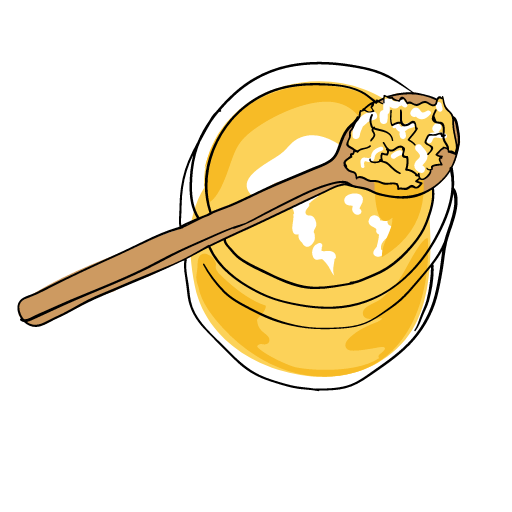Description
Ghee is typically prepared by simmering butter, which is churned from cream (traditionally made by churning the top most layer of dahi, which is also called Bilona method), skimming any impurities from the surface, then pouring and retaining the clear liquid fat while discarding the solid residue that has settled to the bottom. Spices can be added for flavour. The texture, colour, and taste of ghee depend on the quality of the butter, the milk source used in the process, and the duration of boiling time.
Traditionally, ghee is always made from bovine milk, as cows are considered sacred, and it is a sacred requirement in Vedic yajña and homa (fire rituals), through the medium of Agni (fire) to offer oblations to various deities. (See Yajurveda).
Benifits
- Rich in fat-soluble vitamins.
- Contains healthy fatty acids.
- Provides a source of energy.
- Supports skin and hair health.
- Traditional in Ayurvedic medicine.
- Lactose-free, suitable for lactose-intolerant.
- Aids in nutrient absorption.

